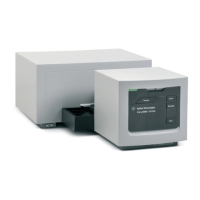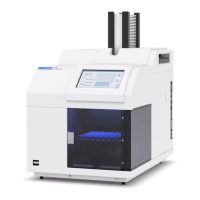19
Theory of Operation
Optical System Overview
Optical System Overview
Optical System
The optical system of the spectrophotometer is shown in Figure 1. Its
radiation source is a combination of a deuterium-discharge lamp for the
ultraviolet (UV) wavelength range and a tungsten lamp for the visible (VIS)
and short wave near-infrared (SWNIR) wavelength range. The image of the
filament of the tungsten lamp is focused on the discharge aperture of the
deuterium lamp by means of a special rear-access lamp design which allows
both light sources to be optically combined and share a common axis to the
source lens. The source lens forms a single, collimated beam of light. The
beam passes through the shutter/stray-light correction filter area then
through the sample to the spectrograph lens and slit. In the spectrograph
light is dispersed onto the diode array by a holographic grating. This allows
simultaneous access to all wavelength information. The result is a
fundamental increase in the rate at which spectra can be acquired.
Figure 1 Optical System of Spectrophotometer
Lamps
The light source for the UV wavelength range is a deuterium lamp with a
shine-through aperture. As a result of plasma discharge in a low pressure
deuterium gas, the lamp emits light over the 190 nm to approximately 800 nm
wavelength range. The light source for the VIS and SWNIR wavelength range
is a low-noise tungsten lamp. This lamp emits light over the 370 nm to
1100 nm wavelength range.
Tungsten
lamp
Source lens
Deuterium
lamp
Shutter/stray
light filter
Cuvette
Photodiode
array
Source lens
Slit
Grating

